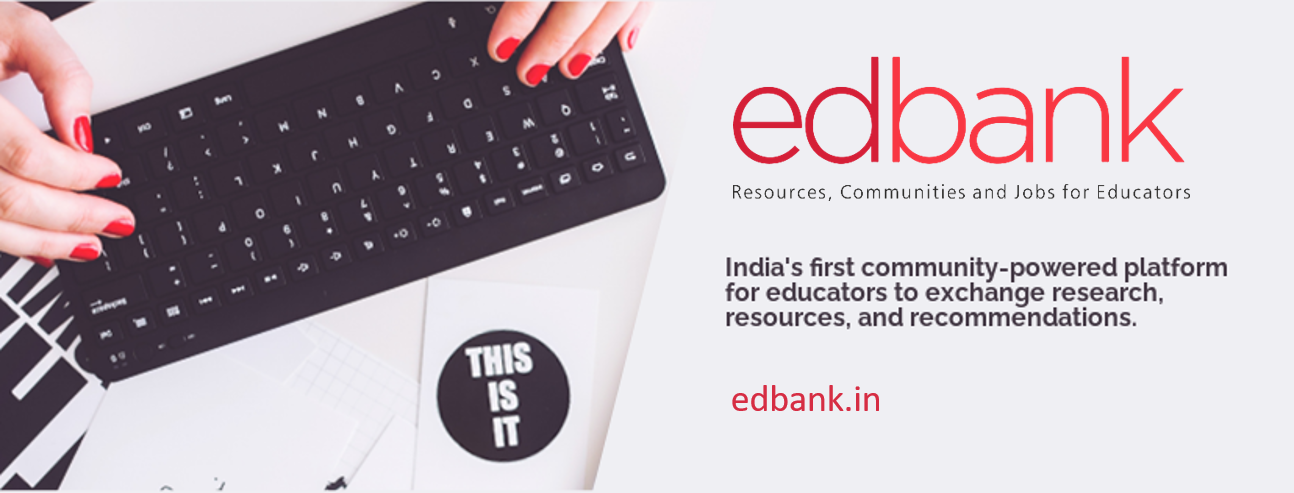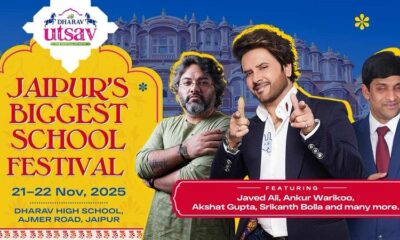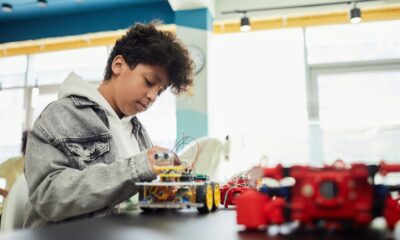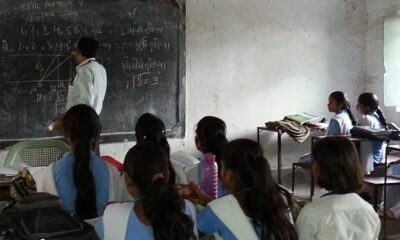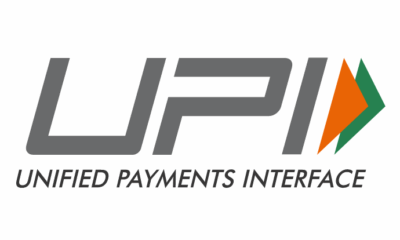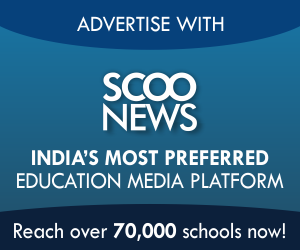Education
Leading lights from education discuss the highs and lows of 2019 as well as the hopes for 2020
In the last month of the year, a note of hope was sounded with the HRD Ministry declaring that the new National Education Policy would be in the public domain very soon and, what’s more, it would ‘establish the glory of India in the world’.
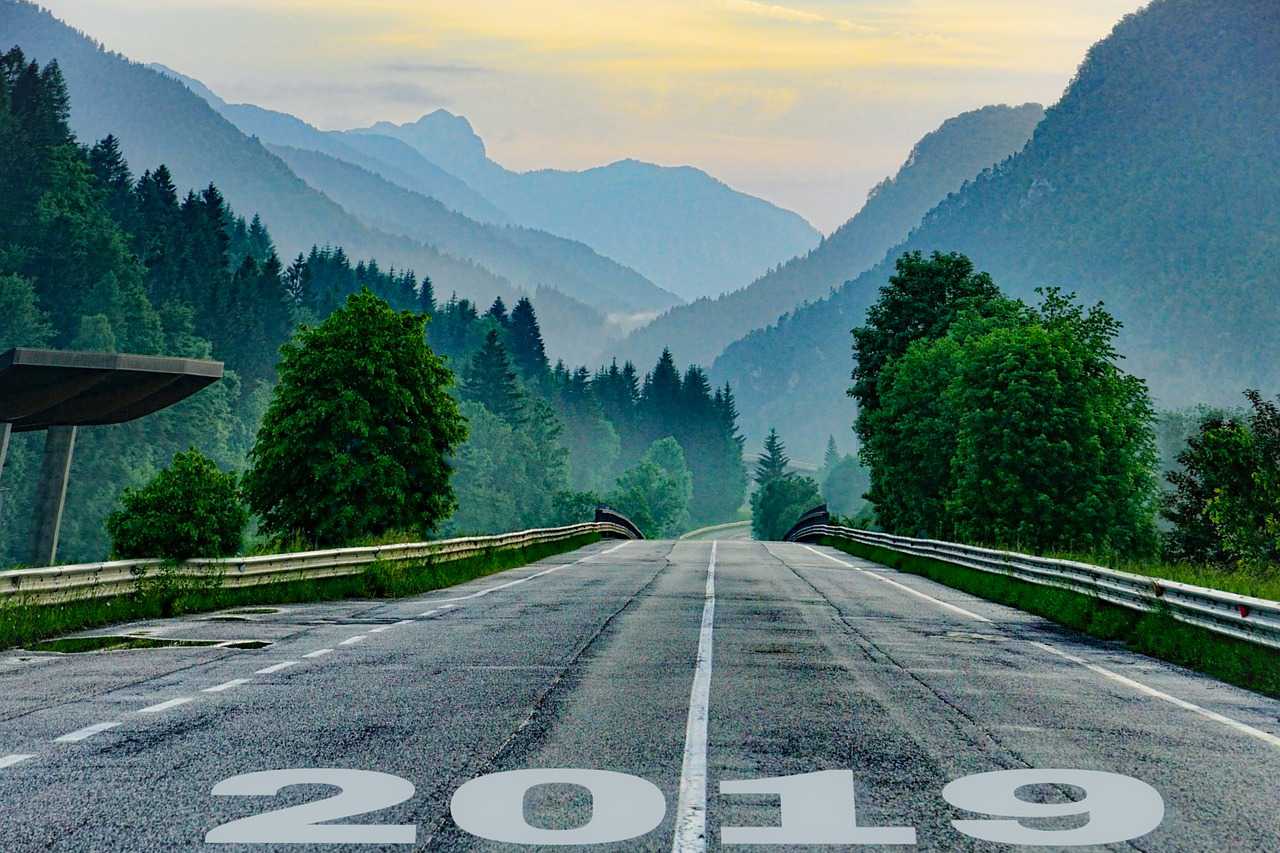
In the last month of the year, a note of hope was sounded with the HRD Ministry declaring that the new National Education Policy would be in the public domain very soon and, what’s more, it would ‘establish the glory of India in the world’. Yes, we could do with some of that shine! MHRD Secretary (Higher Education) R Subrahmanyam emphasised, “This education policy is going to modify the way we are implementing our education systems.” NEP 2019 envisions an India-centred education system that contributes directly to transforming India sustainably into an equitable and vibrant knowledge society, by providing high quality education to all. Some of the goals include quality early childhood education for all children between 3-6 years by 2025, every student in Grade 5 and beyond to achieve foundational literacy and numeracy by 2025, new 5+3+3+4 developmentally-appropriate curricular and pedagogical structure for school education, integrated, flexible school curriculum, no hierarchy of subjects, no hard separation of areas; integration of vocational and academic streams and lots more. The implementation of the NEP is naturally much looked forward to in the new year, by a system that has much to achieve. Incidentally, the HRD ministry received more than 2 lakh suggestions on NEP.
Edtech continues to make big strides. A study conducted by Google and KPMG had estimated online education in India, apparently the fastest growing internet market, to mushroom by 8 x into a close to $2 billion industry by 2021. This boom has seen a varied range of edtech platforms tackling the current infrastructure gap in different ways. While some use animation to teach complex topics, others have human tutors doing the teaching, while still others have gamified the process to create an interactive learning experience. Edtech start-ups, with their new and engaging range of solutions including new age tutorials, flipped classrooms, personalised learning and standardised resources, have the potential to leapfrog our education system towards increased success.
Say edtech and it must willy-nilly be followed by Byju’s… Byju’s, which has since raised close to a billion dollars from investors, is among the five most valuable Indian start-ups, along with Oyo, Paytm, Ola and Swiggy, last valued at about $5.5 billion in July. The company posted profits of ₹20 crore last fiscal on revenues of about ₹1,400 crore, on the back of about 35 million users, 2.5 million of whom are paid subscribers. With close to 85 percent renewal rate, the firm is on course to clock ₹3,000 crore in the current fiscal.
Budget time, it was revealed that the government plans to invest Rs.38, 572 crore under the National Education Mission. In 2018-19, Budget Education was Rs.56,619 crore, which had been increased to Rs.62,474 crore. It has been further increased to 76,800 crore in BE 2019-20. The four prominent schemes under National Education Mission, including Sakshar Bharat, Sarva Shiksha Abhiyan, Rashtriya Madhyamik Shiksha and Teacher training programs, are expected to get a boost. The increased spend on National Education Program will make provision for skilled teachers in the system with better pay. It will also provide incentives to encourage research across all disciplines along with strengthening the technical capacity of the central schools.
With the budget's emphasis on digitisation, AI and advanced technology, integration of technology in classrooms is expected to get a considerable thrust. Additionally, education is expected to become more accessible for all. Technology upgradation and teacher's training are the two critical elements that will allow Indian schools to leverage the power of digital solutions and prepare students for new age jobs and careers.
Even as President Ramnath Kovind stressed that liberal arts education needs to be given as much importance as science and technology, and at least 23 teenagers in the southern Indian state of Telangana killed themselves since their controversial school-leaving exam results, several million people, including thousands of students, took part in the global climate strike across the world, inspired by Swedish climate activist and student, Greta Thunberg. “People are failing to grasp the anger of the younger generation in the face of a changing climate,” young Greta pointed out. “People are underestimating the force of angry kids.” Truly, if we cannot help, let us not hinder and simply get out of the way!
Since year endings merit looking back and looking forward, we got key experts from the field of education to share with ScooNews their views on the main developments and happenings in the field, both domestic and global, over the year. What did they find encouraging? What are the lessons that need to be learned from the challenges encountered to ensure better outcomes? What are they particularly looking forward to in the new year with regard to education? Here’s what they feel…
‘Learning is now a life-long practice’
Pukhraj Ranjan
Indian education & social innovation advocate
Head of Community & Media at HundrED.org
Schools in India and around the world are trying to innovate and match the speed at which the world is changing. But education, as of today, isn’t restricted only to the school boundaries. Children are learning from TV, social media channels, their own parents and communities, news, internet and through many other learning avenues. Learning is now a life-long practice which presents an ongoing, voluntary, and self-motivated pursuit of knowledge for either personal or professional reasons.
Through my experience at the HundrED Innovation Summit (Helsinki, Finland) and World Innovation Summit for Education – WISE 2019 (Doha, Qatar), over the last month, has reiterated my belief in the future of education to be rooted in holistic development and holistic wellbeing of the child.
Across both the summits and my continued interaction with global education innovators, I have noticed a deep focus on using design thinking to solve social challenges that prevent students from getting access to education. I also have noticed a rise in soft (essential) skills education like that of social inclusion, active citizenship, and personal development, but also self-sustainability, as well as competitiveness and employability.
71% of the HundrED 2020 global collection of education innovations target the development of 21st century skills as defined by the Future of Education and Skills 2030 report by the OECD (2018). The six winners of the 2019 WISE Awards were also seen to be addressing global educational challenges from supporting low-income families with funding support packages in Sierra Leone, Nigeria and Liberia to facilitating early childhood development through home visiting programs in Brazil, etc.
A key facet of the conversations in the current global education landscape revolves around innovative practices in education that have solid evidence of impact and more importantly have the potential to scale.
New innovation needed:
While researching innovative education practices, the HundrED research team identified some global factors contributing to the resistance and distrust on experimenting with new practices and technologies. These include:
Time is a scarce resource that is spread thinly across curricula demands, which consequently stifles deep thinking, imagination, and creativity in schools.
Managing demanding assessment expectations causes most educators and students to be risk averse (e.g. the rise of standardised assessment).
Teachers are stressed just to get to the end of the day and cut corners out of necessity, leaving little room for new ideas to grow in an agile way.
Current structural boundaries (like a rigid school timetable) stifle new ideas for teachers and students, making it very difficult for innovation in education to spread easily.
As an Indian educator and innovation advocate, I believe new innovations in education should aim to allow us to do more with less and provide ways for educators to mitigate against these barriers.
Holistic wellbeing of all:
As we move into 2020, I look forward to seeing a sustainable and continued commitment to holistic development and holistic wellbeing of not just the child but all key education stakeholders like teachers, school leaders, parents, etc. I am also hopeful for a renewed focus on actively listening and involving the beneficiaries of our work and critical educational conversations, especially students and youth. And as mentioned above, I hope to see more innovations in education that do more with less and provide ways to help children flourish and reach their potential worldwide.
‘Attention given to personalised learning is heartening’
Lina Ashar
Educationist, entrepreneur, writer
Chairman, Kangaroo Kids Education Limited
The most promising developments in education recently have been the integration of technology in classrooms and schools and the increased attention given to personalised learning.
We’re at the cusp of an education revolution and modern advancements have been the driving force that could very well change the face of education forever. The integration of technology in schools and classrooms has been a boon to students, faculty and management. The use of classroom management software and cloud technology have not only help drive cost savings and operational efficiencies but improve the utilisation of resources for student learning. Breakthroughs in the field of Artificial Intelligence and Virtual Reality, within the education sector, have changed the way students learn, paving the way for data-driven and personalised learning.
Artificial intelligence has improved student learning through tutoring systems that are available as and when the student requires. The same system is able to adapt the teaching approach to suit the student’s needs and thereafter evaluate the student’s performance. It utilizes data obtained through direct interaction and mobile learning to adapt the approach and help realise the student’s potential for learning. Artificial intelligence, through the use of concepts like online learning and data-driven learning, is helping make a student’s education more relevant and personalised. Virtual reality or virtual learning has made it possible for students to experience their education more vividly, increasing their interest in the matter and improving their understanding. It makes the interaction between students and subjects more immersive and engaging by giving students, quite literally, a better view on the subject.
The need to find motivation:
Resilience and positivity are the key lessons to learn from any challenge. I believe that students today lack the self-belief and determination that could help them overcome challenges. Students may have the skills and direction to overcome challenges, but they need to find the motivation to keep moving forward.
Parents and teachers need to help students understand that failure is not the end, it’s a means to an end. Failure is a stepping stone and can help students learn, so by teaching them to look at it positively, children can gain the potential to learn more.
Obstacles and challenges are a part of life, it’s how we choose to look at it that can make the difference. When these challenges appear, it is up to us to find meaning in it. This can set us on the road to developing resilience. Let the life story of Lou Gehrig serve as an example of overcoming challenges and creating better outcomes. Lou was a clumsy kid, and the boys in his neighbourhood wouldn’t let him play on their baseball team. But this didn’t deter him from playing baseball, instead, he tapped into his source of inner courage and determination to keep improving. Where do you think that got him? Today, he is listed in the Baseball Hall of Fame as one of the greatest players of all time. Such is the power of positivity and resilience.
Taking failure positively, but at the same time using the experience to overcome it, can put students on the path to success. Ultimately, to ensure better outcomes, we need to make sure that we learn from the experience and use that learning to do better; positivity and resilience help ensure that we keep moving forward and keep learning.
Not a restart but change:
A new year symbolises a new beginning, but what we need isn’t a restart, we need a change. Education needs to be restructured to provide learners with the knowledge, skills and competencies they need for the future.
Education needs to be less about just teaching children and more about how we can create effective, lifelong learners, where learning new skills will be an ongoing necessity throughout life. To that end, I’m looking forward to a revamp of the system; making student education more focused on development rather than on results and success.
In the future, education and every other aspect of the world will be heavily dependent on technology. Many jobs will be replaced by machines. So, what’s in store for our children?
Jack Ma, the founder of Alibaba, spoke at The World Economic Forum, saying: “If we do not change the way we teach, the world will be in trouble. Our education is knowledge-based, and we cannot teach our kids to compete with machines. We have to teach them something unique so that machines can never catch up with us.”
We need to equip the learners of today with the skills and values that can help them become adaptable, innovative, and purpose-driven, as those will be the requirements for success in the world that they will live in. We need to prepare our children for the workplace of the future.
Keeping that in mind, I look forward to the evolution of education in terms of a pivotal shift. Regrettably, the push for change is an external one, from industries that are not having their needs met by the current state of education. Education should be more proactive to future vision and change by itself. So, here’s to hoping that the education system will realise the necessity of such a change.
‘Overjoyed by happiness inclusion in curriculum’
Dr Jagpreet Singh
Headmaster, Punjab Public School, Nabha.
I was thrilled to see the inclusion of technology making its presence felt in almost every education sector. I was overjoyed by the fact that Delhi government and other states included Happiness in their Curriculum. Ironically, at the same time this has left me wondering …do we need to teach happiness and enforce it in our lives? Time to contemplate, my dear colleagues from the education fraternity…!
Drawing the line:
Yes, with IT playing the role of necessary evil, we need to have a more clear line of thought about “how much is too much”. We must understand and find out the constructive role of technology in the learning outcome as per various Educational Boards.
Catch ‘em young:
I will be extremely elated to see the young generation taking up teaching as profession. Classrooms breaking the barrier of four walls and inter-disciplinary approach will be an interesting thing to learn and implement.
‘Dialogue is a silver lining’
Dr. Sumer Singh
Author and advisor to schools
Director Education Salad
In spite of the dismal level of financial support from government towards school education and education research, there are some silver linings which have emerged in recent times.
What comes to mind first is dialogue, dialogue between educators and the CBSE and between educators and the Ministry of HRD. How much is the impact on policy is still not known but the desire for more open conversation gives rise not only to optimism but also to the emergence of enhanced brainstorming and to a consequential growth of education leaders in the private sector.
From my perch as a retired educationist I see them coming out of their limited campus environments onto the bigger stage and a number of educational thinkers are having a very positive impact. Not only are these educationists more outspoken than their counterparts of my generation, but they have been sharing their views and experiences on the platforms provided by a mushrooming of conferences and workshops across the country. These ever-multiplying conferences are leading to sharing of best practices, ideas and cooperation as never before. Organisations like ScooNews, Education World & Future 50 need to be recognized for their contribution in the development of this phenomenon.
The second positive development is globalization and inter-cultural learning. Educators are engaging beyond the elitist global clubs that benefit only a few. AFS has grown in the last two years into a network of a hundred schools pan India, providing training in intercultural skills to over thousands of students and hundreds of educators. Apart from overseas exchanges it has initiated domestic exchanges and I have seen the dividends of student exchanges between schools in different parts of the country creating friendships and a better understanding of our cultural diversity. This is so important in an age when nations and even Indian states are finding reasons to isolate themselves in a false sense of nationalism and protectionism.
Migration across state and national borders in search of better education, professional development and tourism is a growing reality and preparing students in inter cultural sensitivity is an essential component of education.
Educators are equally exposing themselves through study tours abroad. The biggest impacts in this process is the emergence of humanities or the liberal arts as a preferred option and the importance now being given more widely to languages, visual and performing arts.
In all this churning many of our students have shifted priorities beyond traditional and well-paying careers to areas of responsible citizenship, desiring to make an impact on issues like environment & urban planning, gender sensitivity, conflict resolution as also educational opportunities for the less privileged. This new breed will impact our society for the better for they are thinking beyond their own personal comforts. Certainly more than we did.
There is also a gradual shift in rural areas away from a desire to secure government jobs towards acquiring skills and working independently. If this trend grows the result will be more enterprise and the creation of jobs.
Postponement of qualifying exam disheartening:
Having listed some of the positive trends I have a major regret which I do hope is addressed soon. In the 1980s I attended a series of meetings with the HRD Minister, Education Secretary and Chairperson of the CBSE. It was resolved that India would do away with the school leaving examination which restricts multi-faceted talents recognizing only academic achievements based on restricted parameters, encouraging unhealthy competition and stress. That we would replace this with a common higher studies’ qualifying examination that could be attempted a multiple of times. It was hoped to reduce the existing numerous entrance examinations and, in the process, give more freedom of curriculum at the school level.
I was sad to learn soon after that the implementation of this decision was postponed because the Ministry lacked the technical skills to introduce the resolution till such time as papers could be simultaneously prepared in multiple languages. I do still hope this scheme, long forgotten, is revived one day.
We all hope that educators will shift from a lecture, notes and memorization methodology to a more creative and experiential model. But until the assessment model is changed, we will remain tied to marks and ranks, neglecting the essential soft skills that define each of us.
‘Swing from memory-based to skill-based education’
Anirudh Khaitan
Vice Chairman Khaitan Public School
Director, Bengal Education Society
Our recent trip to Australia has been an eye opener for the education system that is being followed there. The complete assessment and analysis of students performance is being monitored through data using artificial intelligence tools. Technology is being heavily integrated into classrooms, being in the real world feel into classrooms. What was very encouraging to see globally is how education is being moved away from memory based to more skill-based education. Specially in Australia, they have managed to bring in literally 1000’s of skills into high school education and there is a very positive impact on schooling there because of it.
Even in India, there has been a complete thought process change in how one of their leading boards CBSE is viewing education. They have been able to shift their mindset from Rote Learning Methodology to more experiential based learning. This is more in line with what is needed in our country. The have recently announced many initiatives from reforms in assessments that will have a huge impact on how education is done in the country.
RTE challenges:
The introduction of RTE has been extremely challenging both for government institutions and private institutions. Instead of increasing overall enrolment, RTE has managed to only shift students from Government to Private schools. Currently the RTE is going to be revamped and we are very hopeful that the government will look at all the misgivings of the earlier policy and make it better. The government is the biggest provider of education, without which a country cannot move forward. They are already focussing more on making their own schools better and now we look forward for their support in the initiatives taken by the private schools, so together we can all take the country forward.
Needed: NEP implementation:
I am particularly looking forward to the implementation of NEP as if done in the right way, it could make a huge impact on school education. Personally, for our schools, we are looking at automating all processes as into give a better product and experience to our students and parents.
‘AI is digging into data and learning rapidly’
Anand Krishnaswamy
Dean of STEM Studies
Purkal Youth Development Society
What a teacher is, has been a shape-shifting definition since our mythological version of the guru in a gurukula – from being a controller to a facilitator, from being the store of knowledge to flipped classes, from being the key player in a closed room to MOOCs, from that strict martinet to an empathetic comrade – and continues to change. But there is one development which is rapidly pushing education and teachers to answer this question as in that answer will be the roadmap to how education itself will take shape. That development is of artificial intelligence (AI) and its increasing role in education. Before I go into the debate, let me present some of the work that is out there.
Many countries are invested in AI in education. Global edtech funding jumped a whopping 58% in 2015 from the previous year. The market is projected to grow at 17.0% per annum, to $252 billion by the year 2020. Asia is seeing the fastest growth in investment into the sector; China, in particular, is the largest edtech market. China is also very bullish about AI in education. Many reports across the world attribute higher pass grades and reduced dropout rates to collaborating with an AI adaptive learning system. It will no longer be about gadgets but about utilising tech for providing value unlike realised before in education. The validation is there but what are the key differentiators?
The biggest strengths:
AI’s biggest strength is scale of operation. An AI system can not only look at the responses of students in the class and identify patterns of error and learning (which an excellent human teacher could also do) but it can also crunch numbers and extract patterns from all schools in a city or state or country and indicate with varying degrees of confidence, the likely paths ahead or challenges in the past. A human teacher is not even privy to this information, let alone possess the ability to process these. An AI system can respond to identified patterns by picking from a massive catalogue of options. A human teacher (and even the best) can respond with a few options. An AI system can process data about a student’s learning pattern over the years & even build a model that maps it to physiological changes – and then repeat this for thousands of students. The best human teacher is rarely ever with one student for many years and even if they are, they are unlikely to repeat this intimate awareness at a scale beyond a few tens at best. AI is a function of its algorithms. The best human teacher is a function of his/her moods, mental acumen (which is not fixed), commitment, health and energy levels.
I’ll present one example of the work out there. A lot of fascinating advancements are being done at Squirrel AI Learning, China. Their strength lies in the granularity they invest in and the responses to signals at that level of granularity. In common terms, Squirrel’s strength is in how minutely they break down each topic, say, a chapter, into facets that require new learning or reconnect to old learning as well as the response mechanism they have for a student’s interaction with those facets. This response mechanism, they call a “knowledge graph”. By presenting about 10-15 questions, the system is able to determine the exact support and help the student needs as well as the flavour of the next lesson (since the next lesson can come in different flavours depending on student learning styles and their individual knowledge graph). The future, at places like Squirrel AI, is fascinating & full of possibilities. Whether this ends up in a test-driven education model (much like what we see in coaching classes and cities like Kota) or an expansive and holistic education – we will never know but AI is here to stay.
Teachers and AI:
While many will emotionally respond with “Ah! No computer can replace a real teacher”, that number is reducing very swiftly. The wiser few do not talk in terms of “either or” and acknowledge that the human would be the best human teacher if s/he admitted his/her shortcomings and utilised AI to fill those and inform his/her judgement. The reason that is inevitable is because teaching and education has loved to play to the image of that amazing teacher who created a miracle in the lives of many. AI is simply not wasting time in miracles but is digging into data and learning rapidly. Teaching & effective learning is composed of elements that are repetitive & rudimentary, coupled with elements that are subjective and perception-based, combined with elements that are inherently evolutionary and adaptive. Some of these elements can be presented by a machine (which is not very different, in its role, from a textbook; just richer). There are elements of analysis that simply need to be performed (what example works best for Kumar? What video should Sujata watch next? Has Vijay truly understood fraction equivalence? etc.) and are today held ransom to the teacher’s willingness, capability or inclination to trick the system. AI can perform these without taking a break. A wise teacher would use this to identify his/her next move.
While India is far behind in AI and is more likely to end up adopting from elsewhere, this is going to be a significant overhaul of education system implementation as we know it. This is a trend I am eagerly watching.
Education
AI to Become a Core Subject from Class 3: India’s Big Leap Toward a Future-Ready Generation

In a landmark move to make India’s school system future-ready, the Department of School Education & Literacy (DoSE&L), Ministry of Education, has announced that Artificial Intelligence (AI) and Computational Thinking (CT) will be introduced as part of the school curriculum from Class 3 onwards, beginning in the academic year 2026–27.
The initiative marks a major step in preparing students for an AI-driven world, ensuring early exposure to technological literacy, ethics, and problem-solving. The curriculum, currently being developed through a consultative process with CBSE, NCERT, KVS, NVS, and States/UTs, will fall under the National Curriculum Framework for School Education (NCF-SE) 2023, in alignment with the National Education Policy (NEP) 2020.
A stakeholder consultation held on 29th October 2025 brought together education leaders, including Prof. Karthik Raman from IIT Madras, who heads the CBSE expert committee responsible for shaping the AI & CT curriculum. The focus is on designing a meaningful, inclusive framework that integrates AI not as an advanced elective but as a foundational skill — comparable to literacy and numeracy in importance.
Shri Sanjay Kumar, Secretary, DoSE&L, emphasised that AI education should be viewed as a universal skill closely linked to real-world applications. “Every child’s distinct potential is our priority. Policymakers must define minimum thresholds and evolve them with changing needs,” he said. He also stressed on teacher training as the backbone of successful implementation, with modules under NISHTHA, and resource materials being prepared by NCERT and CBSE.
The Ministry plans to release AI handbooks and digital resources by December 2025, followed by a grade-specific rollout supported by video-based learning materials and structured training.
By embedding AI education from the foundational years, India aims to nurture a generation that understands, creates, and applies technology ethically — transforming the vision of AI for Public Good into everyday classroom reality.
Education
Dharav Utsav to Celebrate Rajasthan’s Cultural Heritage and Local Talent
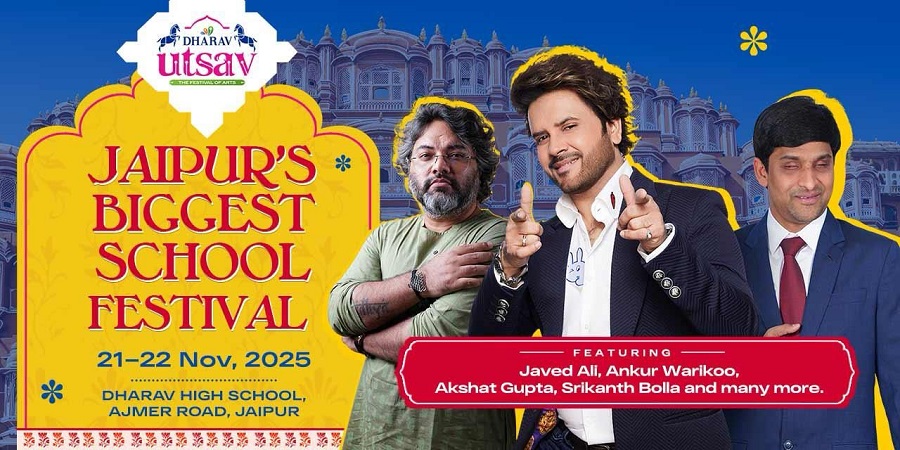
Education
How to Build Better Parent-Teacher Communication
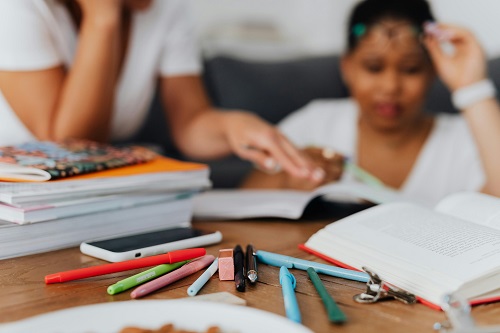
Good communication between parents and teachers plays an important role in a child’s learning and confidence. When both stay connected, it helps students feel encouraged and understood. Still, it’s not always easy to keep that connection strong. Busy schedules and small misunderstandings can make things tricky. The good news is that a few simple habits can make a real difference. Let’s examine what parent-teacher communication truly entails and how both parties can collaborate more effectively.
What is Teacher and Parent Communication?
Teacher and parent communication is all about staying connected and working together for a child’s growth. It’s not just a one-time meeting or message but a continuous, two-way exchange of updates, ideas, and feedback. When teachers and families stay in touch regularly, it creates a strong support system that helps students do better both in and outside the classroom.
In simple terms, teachers share what’s happening at school, like:
- Homework and assignments
- Grades and test results
- Class activities and behavior updates
- Social and emotional progress
- Strengths and areas where a student might need extra help
At the same time, parents share what’s happening at home, such as:
- How the child feels about schoolwork
- Any challenges or changes they’ve noticed
- Questions or suggestions about learning support
When both sides keep the communication open, it builds trust and teamwork. Teachers understand students better, and parents feel more involved in their child’s education.
Tips for Smooth Parent-Teacher Communication
Talking to parents doesn’t have to feel formal or uncomfortable. In fact, the better your connection with them, the smoother your teaching journey becomes. Whether you’re reaching out for the first time or trying to keep the conversation going, here are some real-world ways to build trust and keep communication easy, clear, and helpful.
1. Begin with a Friendly Introduction
Right at the beginning of the academic year, take a moment to introduce yourself to parents. You can send a friendly email, a printed note, or even a short video message. Let them know who you are, what you’re excited about, and how they can reach you. This early step breaks the ice and helps parents feel welcome and included in their child’s learning journey. When you set a positive tone early, it makes future communication easier and more comfortable for everyone.
2. Communicate Often, Not Just When There’s a Problem
Don’t let communication only happen during parent-teacher conferences or when something goes wrong. Send regular updates about what’s happening in class, upcoming events, or even small successes their child has had during the week. These don’t need to be long messages. A quick note about a student’s progress or behavior can make a parent’s day and help build trust over time. It also shows that you’re not just reaching out when there’s a problem.
3. Invite Their Voice, Too
Sometimes we forget that parents know their child better than anyone else. Ask questions. How does their child learn best at home? Are there any routines or challenges you should know about? And when they speak, listen fully. These conversations often reveal things that can shape how you teach and connect with the student.
4. Be Available and Approachable
Parents need to know that they can come to you when something is on their mind. That doesn’t mean being available 24/7, but it does mean creating space for honest conversations. You can let them know about your preferred times for calls or meetings, and also offer virtual options if in-person isn’t possible. Make sure the tone of your communication is always warm and non-judgmental so they feel safe speaking up.
5. Treat Parents as Team Members, Not Outsiders
Instead of just delivering information, try to involve parents as partners in their child’s learning. Share ideas for how they can help at home, ask for their observations, and thank them for their efforts. If there’s a behaviour issue or academic challenge, work with them on solutions instead of just reporting the problem. A strong home-school partnership creates a consistent support system for the student, both inside and outside the classroom.
6. Show Cultural Awareness and Respect
Families come from many different backgrounds, and their expectations may vary. Take the time to learn about their culture, language preferences, and family structure. Avoid making assumptions or using language that might feel exclusive. If needed, provide translations or simplify your communication to make sure everyone understands. This small effort shows parents that you value who they are and where they come from.
7. Share Progress in a Way That’s Clear and Supportive
Progress updates should be balanced. Yes, it’s important to point out what’s not working, but don’t forget to highlight what is. Give specific examples instead of vague praise or criticism. Say things like, “I’ve noticed Priya really lights up during science experiments,” or “Rohan is still working on staying focused during group tasks.” This kind of feedback feels personal and helps parents understand the full picture.
8. Choose the Right Tools for the Right Message
Too many apps or tools can overwhelm parents quickly. Choose one or two that you’ll stick to, whether it’s a school app, WhatsApp group, or weekly email. Use them for quick updates, reminders, or sharing student wins. Keep your tone casual but clear. Tech is helpful only when it makes life easier for both sides.
9. Respect Their Time and Yours
Teachers and parents are both juggling busy schedules. Respecting each other’s time helps keep communication productive and stress-free. If you’re scheduling meetings, offer time slots that work for working parents, too. Keep conversations focused so that meetings don’t run longer than necessary. Also, set clear boundaries about when you’re available.
When Is Parent-Teacher Communication Most Important?
Parent-teacher communication matters most right at the start of preschool. That first day of preschool is a big moment for every child and their family. When teachers and parents talk openly from day one, it helps everyone feel more comfortable and sets up a strong partnership for the rest of the year.
Why It Matters on Day One
- The first day of preschool often brings a mix of excitement and nervousness for both kids and parents. Honest communication helps everyone feel a little more comfortable.
- Open communication lets teachers learn about each child’s background, interests, and any worries or comforts. This way, teachers can give more personalized care and support from the beginning.
- Early conversations help build a sense of trust between home and school, making the classroom feel like a safe and welcoming place for the child.
- When teachers share classroom routines and expectations with parents on the first day, it helps families get ready and feel involved in their child’s new experience.
- These early talks also give teachers helpful details, like which languages are spoken at home, special family traditions, or any recent changes in the child’s life. This helps teachers communicate better and offer the right kind of support.
By making communication a priority from the very first day, both teachers and parents can work together to help each child settle in smoothly and feel confident as they start their schooling journey. Building strong parent-teacher teamwork not only supports a child’s emotional well-being but also lays the foundation for long-term academic success.
Closing Thoughts
We hope these tips help make your conversations with parents smoother and more meaningful. Building that connection takes time, but small efforts can lead to strong partnerships.
This article is authored by-
Chitra Khanna,
Content Strategist,
KLAY Preschools & Daycare
Education
Beyond the Syllabus: School Teachers’ Insights on Project-Based Learning
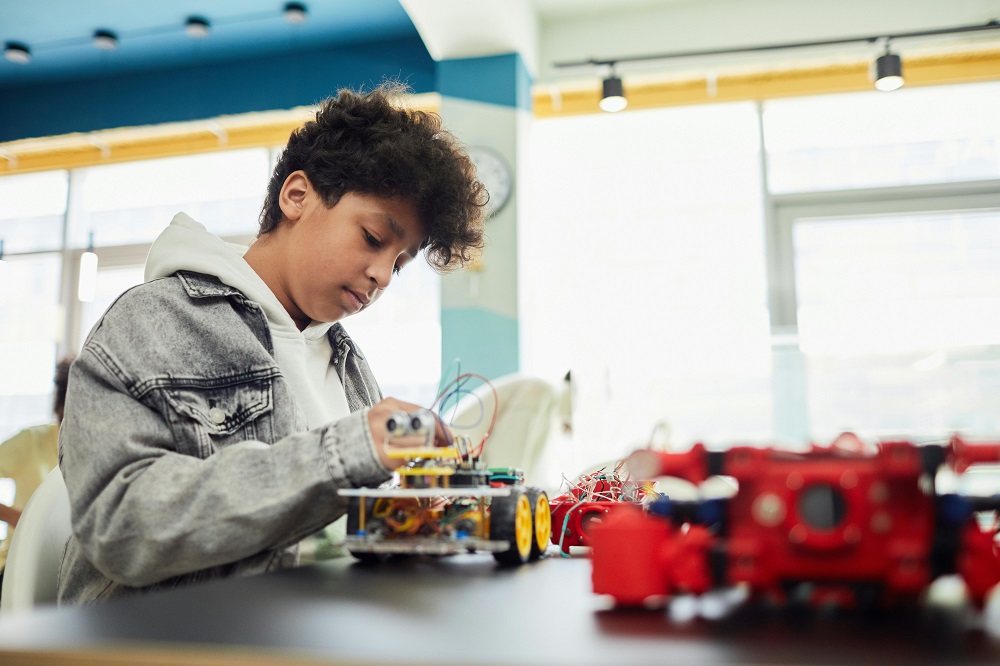
How classroom experiences are being reshaped through projects, inquiry, and authentic learning
As the classroom grows beyond the boundaries of textbooks and blackboards, so too does the role of the teacher, and the very meaning of learning. Project-Based Learning (PBL), once considered a niche innovation, is increasingly being embraced by educators across schools in India. But what happens when PBL moves from theory to practice?
To answer this, we turned to the people at the heart of the learning experience: teachers.
In conversations with educators from diverse school contexts, one theme was clear: PBL is not just a teaching strategy; it’s a transformation in how students learn, engage, and grow.
From Worksheets to Real-World Work: How PBL Differs from Traditional Homework
One of the clearest contrasts teachers observed was how PBL moves learning from repetition to relevance. Traditional homework often reinforces information through rote exercises. PBL, by contrast, asks students to apply their knowledge to solve problems, create products, or investigate issues that matter to them.
One teacher shared how using PBL to raise student awareness about water pollution was a hit in the class. Instead of just assigning problems, the students were made to create awareness posters, conduct surveys in their neighbourhood, and suggest solutions through group presentations. The teacher also noted how the students took the lead, and had an ownership over this project that they usually don’t showcase.
The shift from repetition to application fosters deeper engagement. Several teachers noted that students who previously struggled to stay motivated with homework showed renewed interest when asked to take on real-world challenges.
Changing Roles: Teachers as Facilitators, Not Just Instructors
Project-Based Learning also changes the role of the teacher, who went from being the sole source of knowledge to a guide who supports inquiry and exploration.
One common change teachers noticed was on how they had to let go of control in the classroom. Naturally, the students now had to work on projects on their own, and could only come to the teacher for guidance and help. The teachers noted that they helped their students ask the right questions, find credible sources, and evaluate their work, instead of completely placing the burden of learning on the teacher themselves.
This change isn’t always easy. It requires a shift in mindset and in many cases, rethinking how time is used in class. But most teachers agree: the shift is worth it. PBL has encouraged interdisciplinary approaches, made space for collaborative learning, and created more meaningful student-teacher interactions.
Unlocking Student Potential: What PBL Offers Beyond Academics
Academic performance remains important, but a lot of teachers repeatedly pointed out that PBL nurtures a broader set of skills, like critical thinking, collaboration, communication, and creativity. One teacher particularly noted on how their quietest students became ‘leaders’, and became outspoken when it came to presenting their ideas and projects. While not directly, PBL helped these students find their voices, and find confidence in their effort and abilities.
Students learn to manage time, negotiate roles, and solve problems, skills that aren’t always reflected in exam scores but are vital for life beyond school. For many teachers, the most rewarding aspect of PBL was watching students take initiative, work through failure, and reflect on their learning.
Widening the Circle: Strategies for Scaling PBL in More Classrooms
While the benefits are clear, teachers acknowledged that implementing PBL at a large scale comes with challenges, like limited time, rigid curriculum structures, and unfamiliarity among teachers.
They offered a few practical suggestions for schools and educators considering wider adoption:
- Start Small and Build Confidence: Starting with short projects aligned to the unit you are already teaching introduces PBL in an easy manner. This way, teachers do not have to worry about overhauling their curriculum, or for making huge changes to their current teaching methods.
- Encourage Collaboration Among Teachers: Joint planning across subjects makes projects richer and more integrated. This also promotes interdisciplinary skills among students, and allows them to craft solutions using different subjects and skillsets.
- Make Time for Reflection: Embedding opportunities for students to present, critique, and reflect helps solidify learning. By reflecting on their projects and mistakes, they can understand how they can improve their approach to PBL.
- Support Professional Development: Teachers emphasized the need for ongoing training, not just one-off workshops but long-term spaces for peer sharing and mentorship. This continuous development would cement and solidify the methods and outcomes that will maximise using PBL for student benefits
Looking Ahead: Redefining Success in Education
PBL challenges traditional ideas of what learning looks like. It pushes students to move beyond memorization, and it challenges teachers to rethink their methods. But more than anything, it opens up the classroom to ideas, to communities, and to possibilities. No longer are students just preparing for exams, but also for the complex world outside school.
As educators continue to navigate the changing landscape of education, the insights from teachers point us toward a hopeful future, where learning is meaningful, relevant, and rooted in real-world experience.
This article is authored by Mrs. Padmashini M Patro, Principal, Air Force School Bamrauli
Education
Over 1 Lakh Single-Teacher Schools Educate 33 Lakh Students Across India: MoE Data
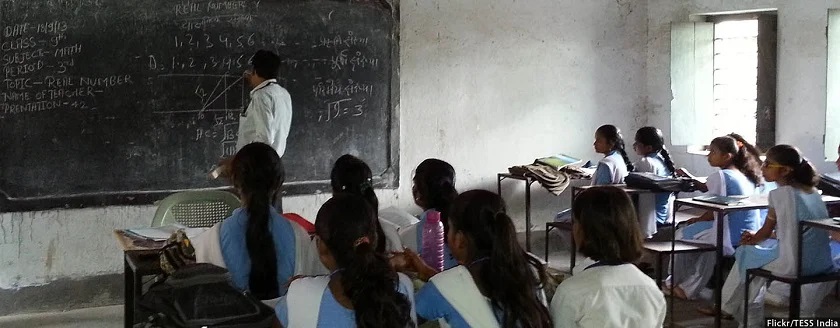
Education
Over 3 Lakh Schools Join Hands for India’s Largest-Ever Innovation Challenge: Viksit Bharat Buildathon 2025
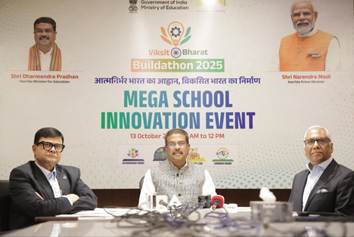
In a historic moment for Indian education, more than 3 lakh schools across the country came together to participate in the Viksit Bharat Buildathon (VBB) 2025, the largest live school innovation challenge ever organised in India. The nationwide event was inaugurated in New Delhi by Union Education Minister Dharmendra Pradhan, marking a significant milestone in the Government’s efforts to embed creativity, innovation, and problem-solving into the school ecosystem.
The Viksit Bharat Buildathon, organised by the Department of School Education & Literacy (DoSEL) in collaboration with Atal Innovation Mission (AIM), NITI Aayog, and AICTE, saw over one crore students from Classes 6 to 12 working simultaneously during a 120-minute live innovation session. Students teamed up in groups of three to five to design prototypes and propose solutions under four themes — Atmanirbhar Bharat, Swadeshi, Vocal for Local, and Samriddhi.
While inaugurating the event, Minister Pradhan interacted virtually with students of PM SHRI Government High School, Khorda, Odisha, and later visited Delhi Public School, Mathura Road, and Kendriya Vidyalaya No. 2, Delhi Cantt. Commending students for their creativity, he said, “The vision of Viksit Bharat will be realised through the innovative spirit of our young learners. These ideas will not only address domestic challenges but also create global models for change.”
The event drew widespread participation, with Uttar Pradesh leading the numbers (78,206 schools), followed by Maharashtra (41,198), Gujarat (20,017), and Madhya Pradesh (18,129). Other states like Tamil Nadu (16,370), Bihar (15,732), Odisha (12,344), and Haryana (11,567) also recorded impressive engagement, showing the growing momentum for grassroots innovation across regions. Even smaller territories like Ladakh (358), Puducherry (149), and Andaman & Nicobar Islands (171) participated actively, reflecting the nationwide reach of the initiative.
According to Sanjay Kumar, Secretary, DoSEL, this unprecedented participation signals a transformation in how Indian students approach learning. “This one-of-a-kind movement strengthens innovative thinking and enhances the problem-solving capabilities of students across India,” he said. Deepak Bagla, Mission Director of AIM, called the initiative a “mass movement connecting schools in remote villages with those in metropolitan cities through innovation.”
A New Chapter for Indian Education
The Viksit Bharat Buildathon signifies more than just a hackathon — it reflects a systemic shift in Indian education towards experiential and innovation-led learning. As schools across the country engage in design thinking, tinkering, and collaboration, students are being equipped not just with knowledge, but with the mindset and skills needed to build a self-reliant India.
By nurturing creativity from an early age and fostering partnerships between schools, government bodies, and industry, the Buildathon is shaping a generation ready to contribute to the vision of Viksit Bharat 2047 — a developed, empowered, and innovation-driven India.
Education
17-year-old Innovator Designs Learning Tools for the Visually Impaired

At just 17, Singapore-based student Ameya Meattle is proving that age is no barrier to impact. What began as a small idea to make education more accessible has evolved into a mission that is transforming how visually impaired learners experience learning and skill development.
Ameya founded Earth First at the age of 14 — a social enterprise that helps visually impaired individuals “earn and learn” by creating sustainable, eco-friendly products. Working with eight NGOs across India and Singapore, the initiative has trained more than 100 visually impaired students and launched over 23 sustainable product lines, from tote bags and jute placemats to macramé planters. Each design is adapted to provide hands-on learning opportunities and help trainees gain confidence in both craft and enterprise.
Beyond social entrepreneurship, Ameya has focused deeply on education and technology. He led a Python programming course for 50 visually impaired students, designing custom training modules that made coding accessible through screen readers and tactile tools. By introducing technology as a viable career pathway, Ameya hopes to help students move from manual tasks to high-skill, digital opportunities.
His work also extends into assistive technology research. Under the mentorship of Dr. Pawan Sinha at MIT, Ameya developed a VR-based diagnostic game to assess visual acuity in children — turning the process into an interactive experience rather than a clinical test. The tool is being piloted at MIT’s Sinha Lab and with Project Prakash in India, helping doctors evaluate and track visual development before and after eye surgeries.
In addition, during his internship at the Assistech Lab at IIT Delhi, Ameya worked on designing tactile STEM teaching aids, such as accessible periodic tables and coding tutorials for visually impaired learners. His goal, he says, is not just to innovate but to make scientific learning inclusive and joyful for all.
Ameya’s work highlights how education, empathy, and innovation can intersect to create a more equitable future — one where technology serves not just progress, but people.
Education
Empowering Young People to Champion Neuro-Inclusion
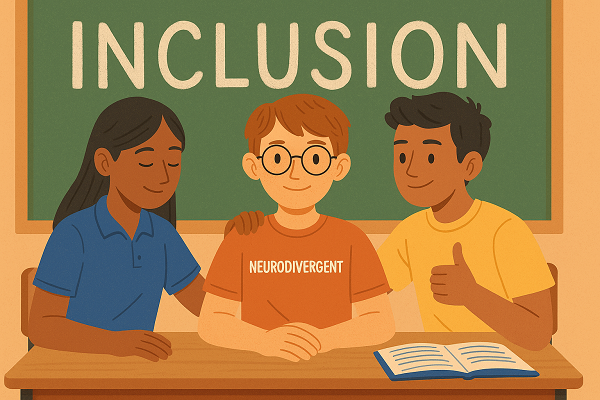
Aamir Khan’s recent film Sitaare Zameen Par has brought neurodiversity into the mainstream, and sparked important conversations about inclusion and rethinking what we consider ‘normal’. These cultural moments help raise awareness, but they also remind us that there is still a long way to go in making inclusion a lived reality.
It is estimated that 1 in 8 children in India have a neurodevelopmental condition such as ADHD, autism, learning disabilities and intellectual disability. Many of these children often face social isolation, bullying and exclusion – often the earliest of these experiences begin during school.
At the same time, today’s young people indeed carry with them a deep sense of social justice and openness to diversity. The energy, empathy and bold creativity of young people can be harnessed – if nurtured in the right way, at the right time – to make them equal partners in cultivating inclusive cultures in schools and communities.
We need young allies – people who are not only informed, but who engage meaningfully with neurodivergent peers, actively support the cause, and drive inclusivity. The key lies in equipping them with the knowledge, skills, and ultimately the mindset needed for inclusion. Schools must invest in nurturing young allies who can champion neurodiversity and take ownership of inclusion in spaces they belong to.
Our experience and work on youth allyship has shaped our understanding of what it takes to make this happen. Here are some of our most important insights:
- From awareness to active allyship: We need to move beyond awareness about neurodiversity, by equipping students with the knowledge, skills, confidence, and opportunities to take meaningful action as allies for neuro-inclusion.
- A personalised journey: Allyship is a lifelong journey which is most authentic when it grows organically from curiosity, dialogue, self-initiative and experiences. It cannot be imposed, and must be led by the individual.
- Student autonomy: When students have the autonomy to choose how they contribute, their commitment deepens. We should give students a mix of structure and freedom to help – guidance to shape their efforts, alongside the space to decide how they want to step up for meaningful change.
So how can schools nurture students as young allies?
- Create safe, relatable spaces led by students, for students Peer-led conversations give students space to reflect on diversity, challenge stereotypes, and share personal experiences. When peers lead, the power dynamics shift – students listen more openly, express without fear of judgment, and begin to see inclusion as something that belongs to them, not just a directive from authority figures. Our Inclusive Duniya Circles are one example of such spaces. Students are primed and empowered to sensitively facilitate conversations about disability, neurodiversity and inclusion.
- Explore connections to students’ interests and strengths
Students should be given the opportunity to discover how they feel about the cause and how they want to contribute. At the end of each Circle, we often ask, “How do you want to step up for an Inclusive Duniya?” The answers vary, but what matters most is that the initiative comes from the students themselves. Our role as adults and educators is to support them in making it happen.
Some take the route of advocacy – sparking conversations and campaigning for the cause with schoolmates. Others channel creativity through music, art, or theatre that challenges stereotypes.
For instance, the song Inclusive Duniya (available on Spotify), was written, composed and produced by students on their own from carefully crafting lyrics which invited listeners to imagine a world where everyone feels like they belong to picking melodies that convey warmth. Students used their creative talents to make a gentle but compelling call to action for allyship. Helping students tap into their personal strengths and interests enables authentic engagement and contribution to the cause.
- Embed into academic and co-curricular pathways
Linking students’ inclusion initiatives and projects to existing academic opportunities, such as CAS projects in the IB curriculum, allows them to merge personal passion with academic commitment. Framing these initiatives as co-curricular activities also strengthens students’ profiles for college applications. This dual recognition provides a formal recognition to their efforts and ensures students’ efforts are sustained – adding motivation, depth and commitment to their efforts.
The voices of young people not only impact their peers, but also have a ripple effect in shaping how families talk about disabilities, and, in due course, how communities and workplaces open themselves up to inclusion.
With the right support, our young generation can become a driving force for an inclusive world. Schools, as microcosms of society, provide the most conducive space for young people to explore sensitive concepts, question biases, and practice inclusion in meaningful ways. By nurturing young allies who truly value and celebrate diverse ways of thinking and being, we can lay the foundation for a more Inclusive Duniya.
This article is co-authored by:
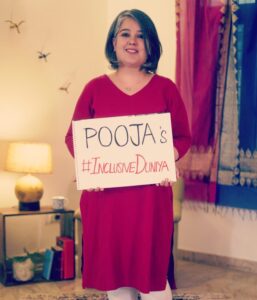
Pooja Sharma, Founder and CEO, Inclusive Duniya
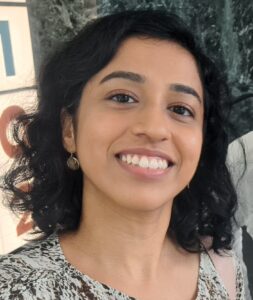
Srushti Patel, Manager- Schools Programme, Inclusive Duniya
Education
Ministry of Education Urges Schools to Adopt UPI for Digital Fee Payments, Promoting Ease of Schooling
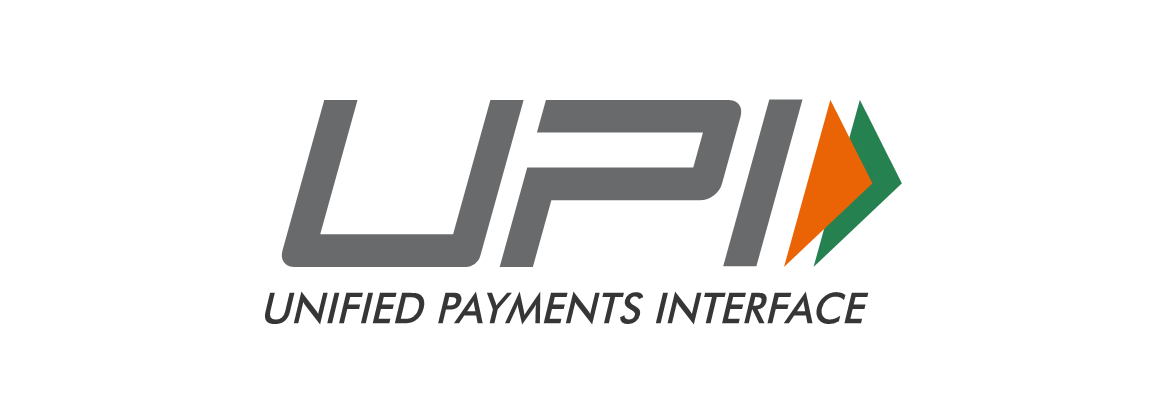
Education
Supreme Court Calls for Early Sex Education in Schools: “Not from Class IX, But from a Younger Age”

In a landmark observation, the Supreme Court of India has emphasised the urgent need to introduce sex education at a younger age, rather than waiting until Class IX as is the current norm. The apex court stated that children should be informed and sensitised about the physical and emotional changes that accompany puberty — and taught the necessary care and caution that come with it.
The observation came from a Bench comprising Justice Sanjay Kumar and Justice Alok Aradhe, which noted that the absence of early sex education leaves children vulnerable to misinformation and misunderstanding during their formative years.
“Sex education should be provided to children from a younger age and not Class IX onwards. It is for the authorities concerned to apply their mind and take corrective measures so that children are informed of the changes that happen after puberty,” the court stated.
The Bench made the remarks while hearing an appeal filed by a 15-year-old boy, who had been denied bail by the Allahabad High Court in a case under Sections 376 and 506 of the Indian Penal Code (IPC) and Section 6 of the Protection of Children from Sexual Offences (POCSO) Act. Recognising that the accused was himself a minor, the Supreme Court had earlier granted him bail in September 2025.
In the same case, the Court had directed the Government of Uttar Pradesh to submit an affidavit explaining how sex education is currently implemented in schools. The state responded that sex education is introduced only in Classes IX to XII, following NCERT guidelines. However, the Bench expressed concern over this delayed introduction and urged policymakers to revisit the framework to ensure children receive age-appropriate education much earlier.
The Court set aside the High Court’s order and made the juvenile’s bail permanent until the completion of the trial. More importantly, its remarks have reignited the national debate on the need for comprehensive sexuality education in India, which many experts argue is crucial to preventing abuse, reducing stigma, and promoting healthy development among adolescents.
Education experts have long maintained that early, factual, and inclusive discussions about puberty, consent, and emotional health must begin before adolescence — ideally in primary school — to prepare children for real-world experiences and relationships. The Supreme Court’s observation is expected to prompt renewed policy discussions on revising the sex education curriculum nationwide.
-

 Education3 months ago
Education3 months agoWhat Nepal’s Gen Z Protests Teach Us About Education, Civic Sense, and Media Literacy
-
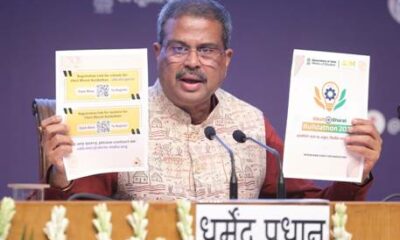
 Education3 months ago
Education3 months agoMinistry of Education launches Viksit Bharat Buildathon 2025 to Ignite Innovation among School Students
-

 Education3 months ago
Education3 months agoMaharashtra Education Department Plans Students’ Tour to NASA
-
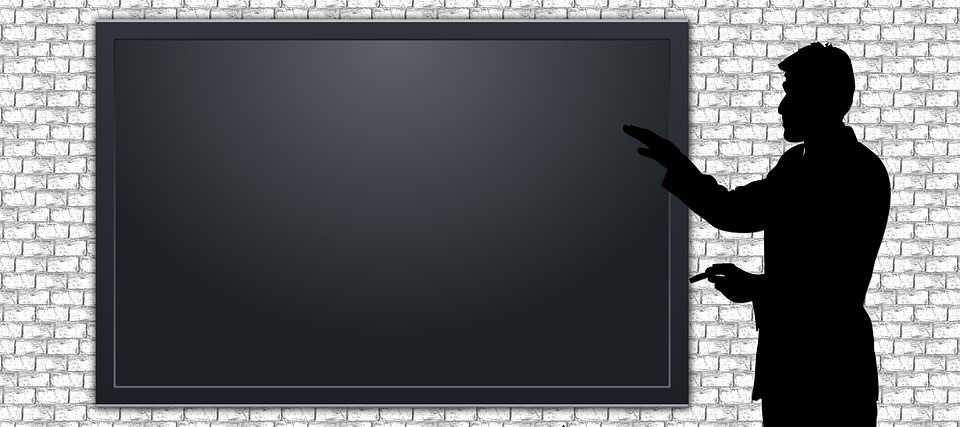
 Education3 months ago
Education3 months agoGovernment Plans to Introduce Skill-Based Learning in Class 11 and 12 Curriculum
-
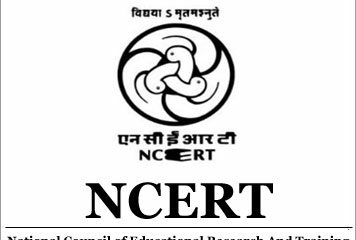
 Education3 months ago
Education3 months agoNCERT to Grant Equivalence to Class 10 and 12 Certificates Across Boards for Admissions and Jobs
-

 Education3 months ago
Education3 months agoClass 11 Student Navya Mrig on a Mission to Bust Myths About Organ Donation
-

 Education2 months ago
Education2 months agoSupreme Court Calls for Early Sex Education in Schools: “Not from Class IX, But from a Younger Age”
-
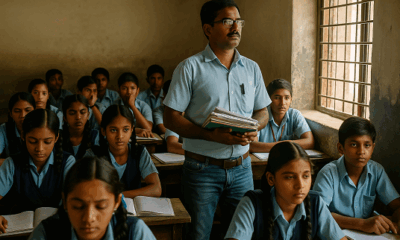
 Education3 months ago
Education3 months agoIndia Loves its Teachers, Just Not Enough to Pay Them: India Today Reports
-
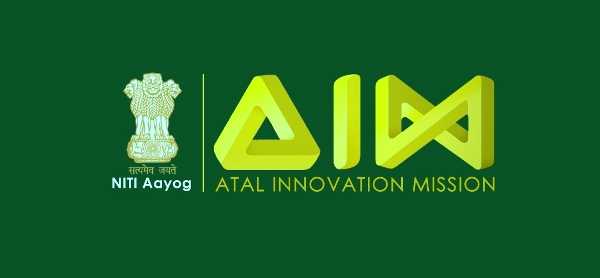
 Education2 months ago
Education2 months agoAtal Innovation Mission and IFCCI Join Hands to Scale Up Atal Tinkering Labs Across India
-

 Education2 months ago
Education2 months agoDelhi Government Launches Online First Aid Training Programme for Teachers


